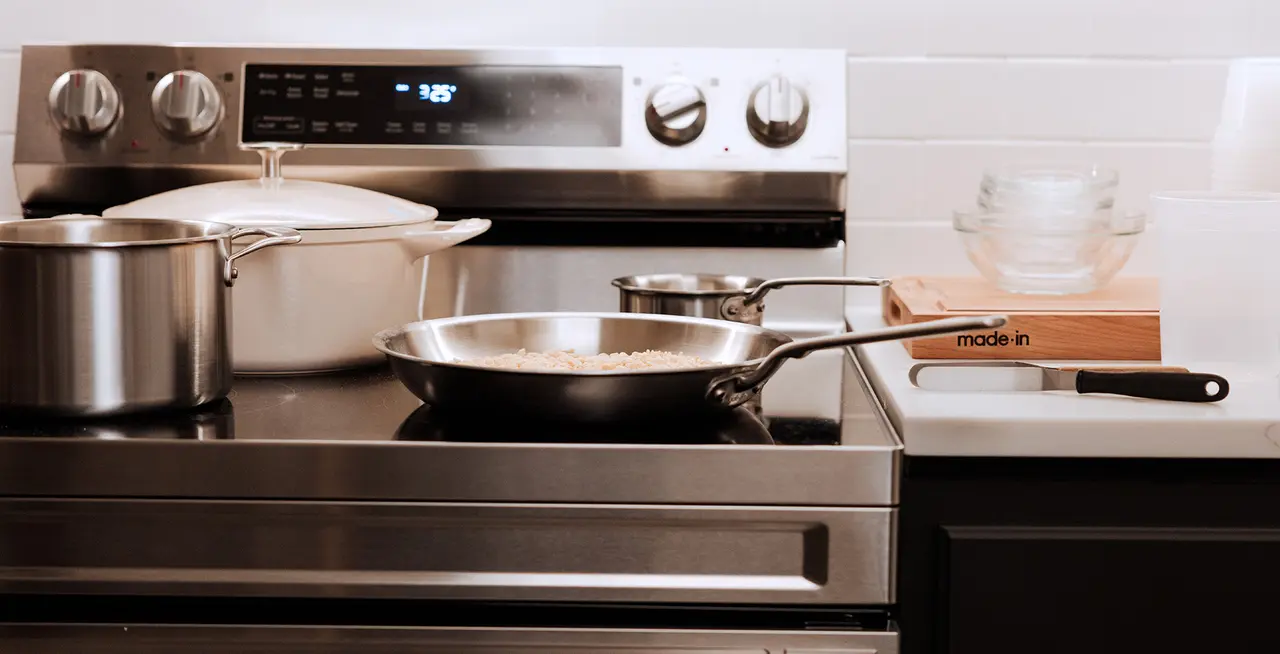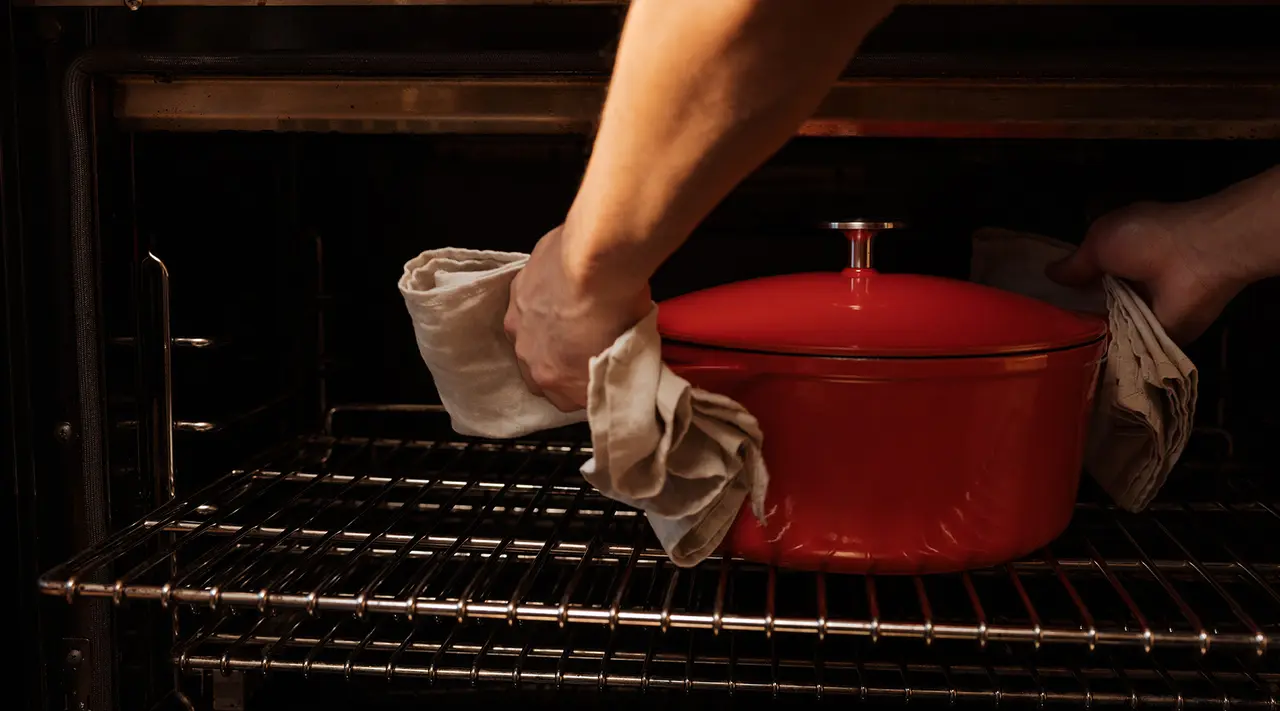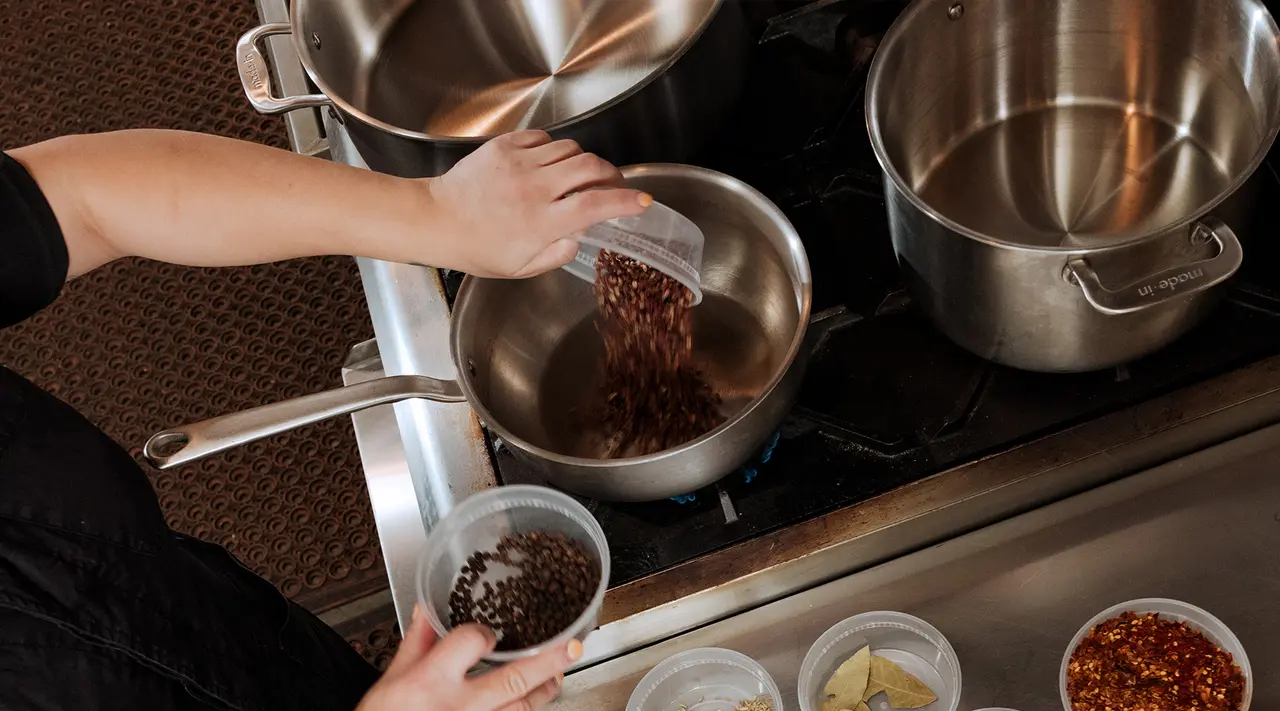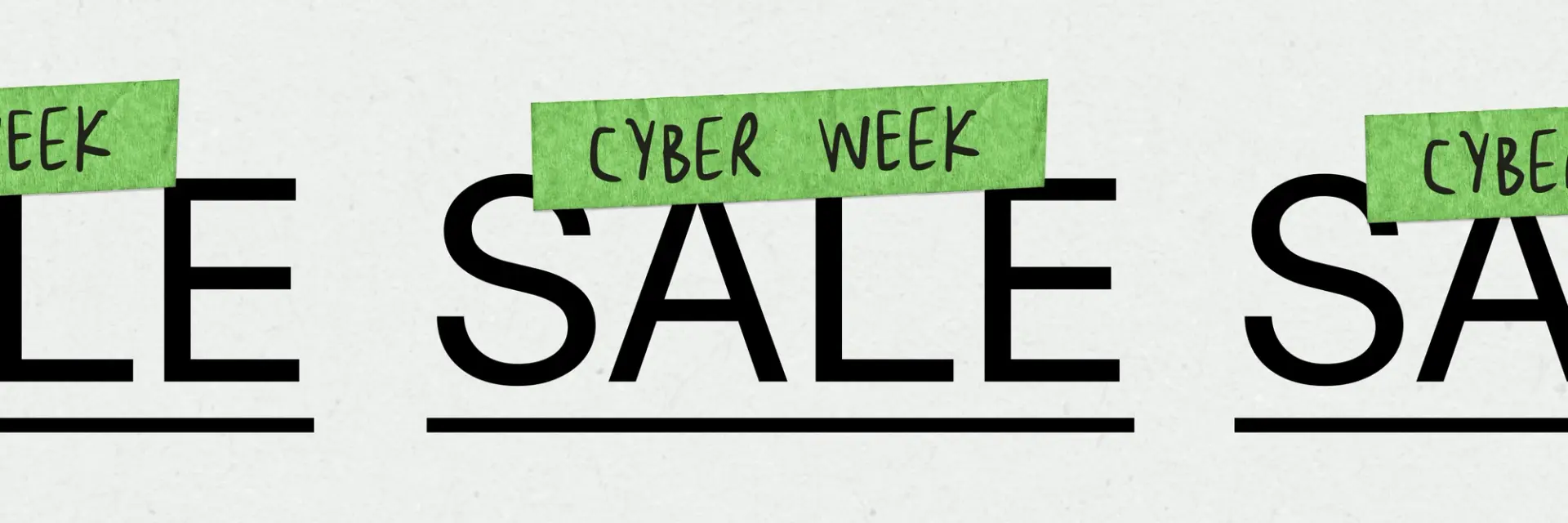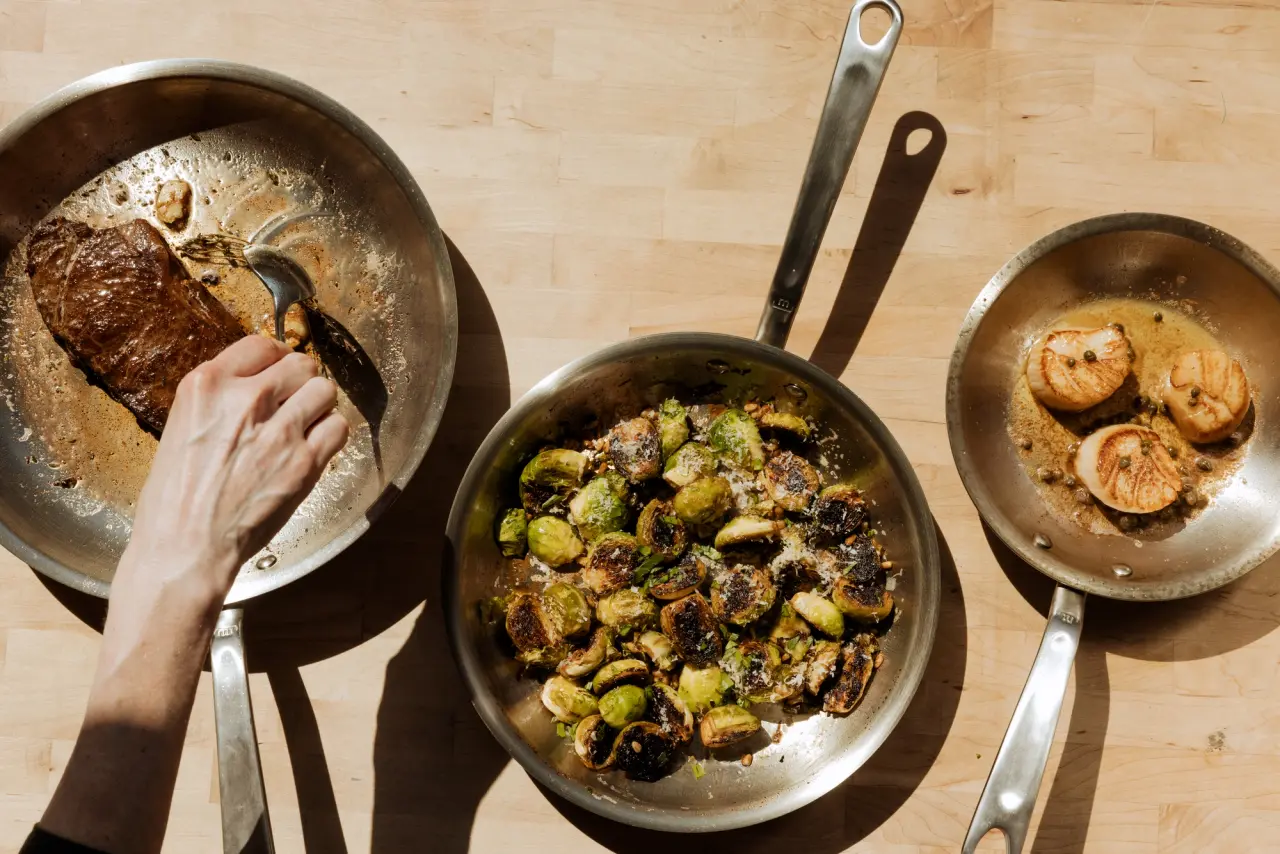While doing your research for a new stock pot, skillet, or saucepan, you’ve likely noticed that two of the most popular options available are cast iron and stainless steel. But with so many options available, it’s hard to know which material will best fit your needs.
The main difference between the two lies in their use case: cast iron excels at both low and slow and high heat cooking, while stainless steel has the innate ability to tackle a wider variety of dishes—and both are widely considered fundamental pieces for any well-stocked kitchen.
Let’s take an in-depth look at both materials, so you can make an informed decision on the piece that’s best for you.
Understanding Cast Iron
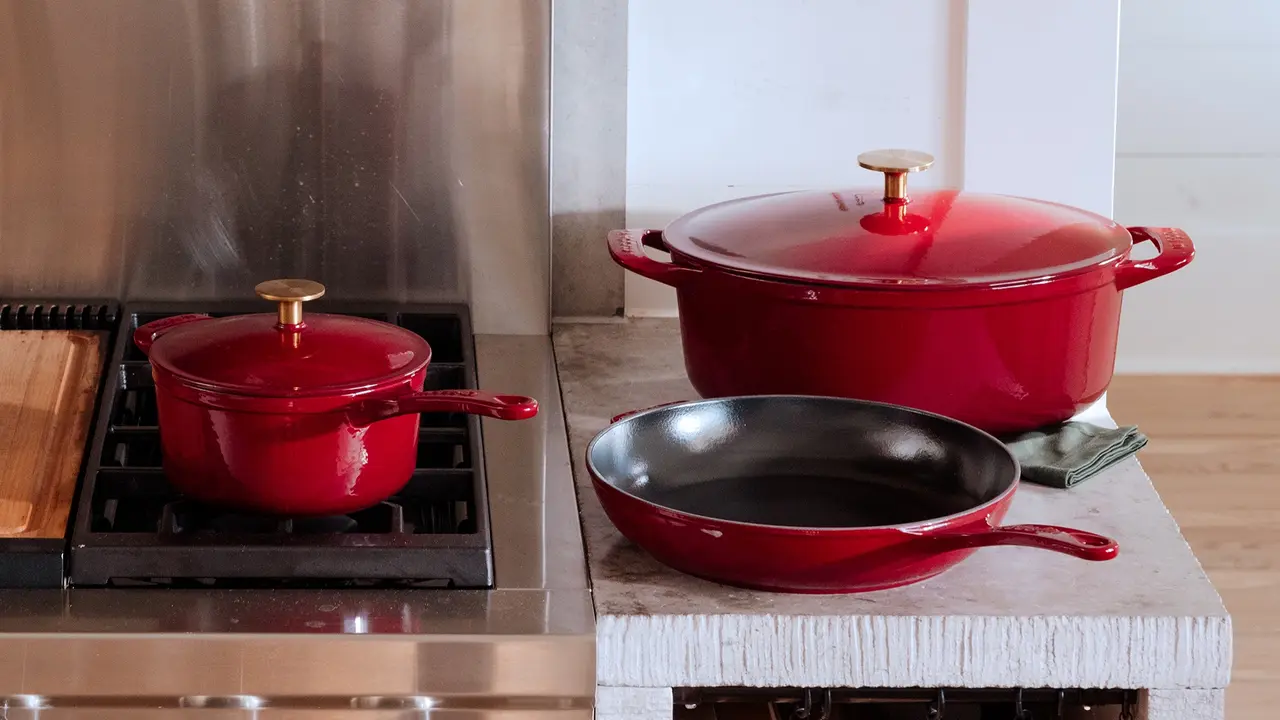
While mass-produced cast iron cookware is a relatively recent phenomenon, the actual process of making cast iron has been around for thousands of years. Cast iron is an alloy of carbon and iron that’s heated until molten and poured into “casts” to form skillets, Dutch ovens, and other pieces of cookware. The result is a heavy, durable pan made of one piece (meaning fewer weak spots), with excellent heat retention.
Today, cast iron cookware is available in unfinished and enameled styles. While each style might look different to the naked eye, enameled cast iron features a thin enamel coating fused to unfinished cast iron. This method creates a smoother cooking surface that requires less maintenance than the typical unfinished cast iron piece, though nowadays both enameled cast iron and properly seasoned, unfinished cast iron have naturally non stick surfaces.
Advantages of Cast Iron
A classic in the kitchen, cast iron cookware is beloved by both home cooks and chefs due to its high heat resistance, naturally non-stick surface, and durability.
Heat Resistance
With the ability to withstand heat up to 1500F, cast iron allows for use on stovetops, in ovens, and even directly on campfire embers. The material is also known to be an excellent conductor of heat, making it a great choice for more rustic, outdoor set-ups where there's less temperature control.
Naturally Non Stick Surface
When properly seasoned (or enameled), cast iron has a non stick surface. However, unlike other non stick pieces which need to be replaced every few years, cast iron can last lifetimes with proper care and maintenance.
Durability
Professional and home chefs alike appreciate cast iron pans for their durability. Odds are, there's a cast iron skillet or Dutch oven that's been passed down in your family for generations, and that's due to their nearly indestructible build—with proper care, cast iron can last for lifetimes, and is less likely to warp from heat than other materials.
Considerations of Cast Iron
Before purchasing cast iron cookware, consider what you’ll be using it for. While the material certainly has its advantages, for those looking for a lightweight, easily maneuverable piece, cast iron might not be what you’re seeking.
Ingredient Limitations
Cast iron is an excellent choice for braising vegetables, searing meat, or baking cornbread. However, cooking acidic foods or sticky desserts in unfinished cast iron can cause the seasoning to deteriorate. (Note that this does not apply to enameled cast iron, which is protected by its coating.)
Cleaning and Maintenance
While cleaning enameled cast iron is fairly easy, caring for its unfinished counterpart does require more thought than most materials—more akin to caring for carbon steel. We offer more in-depth information on cleaning enameled cast iron in our guide to the subject.
Heat Responsiveness
While cast iron has unparalleled heat retention, it does take a while to heat up and cool down compared to stainless steel. Be sure to keep this fact in mind while comparing the two materials.
Understanding Stainless Steel

Stainless steel cookware—or as we call it, stainless clad—is made by cladding layers of metals together to produce an even-heating, high high-capable, induction-compatible material. Most stainless pieces are either 3-ply or 5-ply—meaning they are constructed with either three or five layers of metal.
For example, all of our Stainless Clad Cookware is constructed from 5-ply stainless steel for high quality performance. Our chef partners find that the extra layers provide more protection from scorching and contribute to steady, consistent cooking at every temperature.
Advantages of Stainless Steel
Known for its versatility and unparalleled heat response and control, stainless steel cookware is a favorite in both professional and home kitchens.
Versatility
Stainless steel will not rust or bend with extensive use, and is a nonreactive material. Thus, the material is incredibly versatile in the kitchen, allowing cooks to choose from a range of recipes, including those that use acidic ingredients.
Heat Responsiveness
Thanks to the construction of our Stainless Clad Collection, which layers five metals to borrow the heat control, speed, and precision of each, stainless steel responds to adjustment in heat incredibly quickly—ensuring you can transition seamlessly from high-heat searing to building a pan sauce over low without scorching any ingredients.
Lightweight
Any cookware used in restaurant kitchens demands lightweight maneuverability—and stainless steel fits the bill. This is an advantage when sautéing, stir-frying, and other high-heat or high-speed cooking operations, or for dishes that require transferring between stove, oven, and table.
Considerations of Stainless Steel
While stainless steel is known for its versatility and low maintenance performance, there are some considerations to keep in mind while shopping for the best fit for your kitchen.
Cooking Surface
Stainless steel is not non stick, so cooks must be acutely aware of the ingredients, fat, and temperature they’re cooking with. Otherwise, food will likely stick to its surface and be difficult to remove. While this can be mitigated by knowing how to successfully cook with stainless steel (i.e. cooking with oil, tempering your food, and preheating your pan), it’s a factor to take into consideration while shopping.
Heat Responsiveness
While stainless steel does heat up faster than cast iron, its speed may surprise unsuspecting cooks used to dealing with slow heating, lower-quality cookware. A word of caution: Cranking the heat and leaving a pan unattended to speed up heating is the fastest way to guarantee burnt pans and ingredients. Always keep an eye on pans on the burner, and start slow and work your way up to a higher temp—it's easy to get more of a sear on your ingredients, but impossible to un-burn them.
Cast Iron or Stainless Steel: Which Is Better?
Cast iron and stainless steel cookware perform best in different situations—meaning it's best to think of them not as competitors, but as complements of a well-stocked kitchen.
Cast iron is known to shine while searing meat at high temps and transitioning seamlessly from stovetop to oven, while stainless steel is known for its versatility and easy maneuverability. For a team of tools that can do it all, pair cast iron and stainless steel together.
Ready to Shop?
Cast iron and stainless steel are both highly durable tools that last for years when properly taken care of, and can be used by home and professional chefs alike to create any number of culinary masterpieces.
If you're interested in adding a new stainless steel or cast iron piece to your kitchen, we recommend taking a look at our collections—each piece in our induction-compatible Enameled Cast Iron Collection are hand-finished by expert craftsmen in France, while our award-winning Stainless Clad Collection is manufactured by multigenerational Italian artisans and is optimized for induction and oven safe up to 800F.
